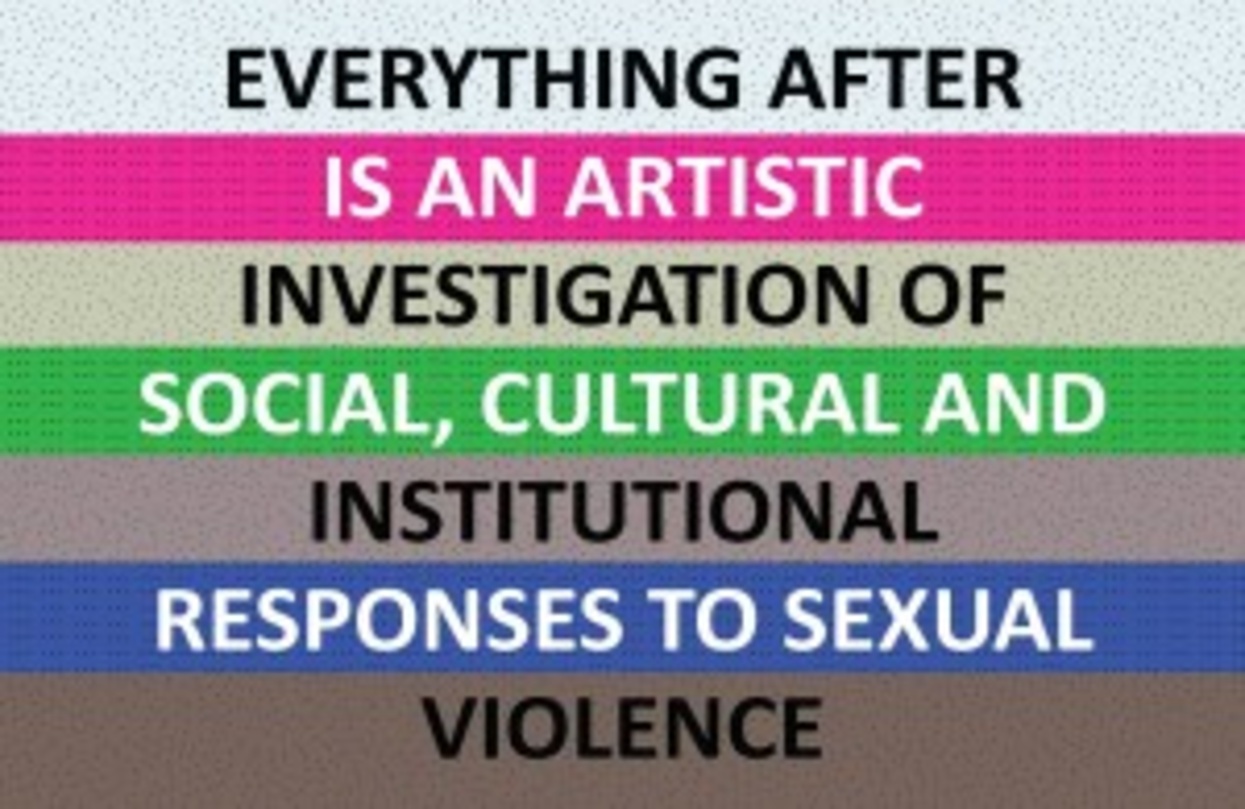Lark Buckingham and Everything After

In a previous spotlight, we highlighted how Lark Buckingham (Art Practice) critiques the role of technology in our lives through the design of real products. Today, we’re showcasing another integral part of Lark’s practice: artistic community activism.
Lark Buckingham’s art centers around the forces that shape human identities, particularly those of the queer community.
While celebrating queer cultures, Lark’s work has never shied away from the darker elements of the queer experience, exploring the discrimination, systemic violence, substance abuse issues, alienation, and poverty which affect many queer individuals. Her short film, “Happy Toilet,” featured at Frameline and the SF Transgender Film Festival, pointed to the intersection of substance abuse with trauma, pollution, and overstimulus in an animated musical short with a queer camp sensibility. Her 2006-2007 series One Life: Living with AIDS/HIV took a more varied approach, involving education, research, humor, and survivor stories. Currently, Lark is working on an experimental performance tour in a school bus with five other artists from across the US.
Lark’s art reflects a strong commitment to body politics and the fight to create a space of respect and equal treatment for minorities and survivors of violence and discrimination. And this is how she has become such an important voice on issues of sexual violence at UC Berkeley.
Lark’s time at UC Berkeley coincided with a change in the national and institutional tenor surrounding sexual harassment and violence. UC Berkeley’s longstanding mishandling of sexual assault and harassment garnered international news amidst the resigning of astronomer Geoffrey Marcy and law school dean Sujit Choudhry, among other long-ignored and denied cases.
From her own undergraduate background, Lark recalls negative experiences with sexual violence on campus and a campus attitude which did not support survivors nor scrutinize alleged assailants. Returning to a university setting amidst a change in public opinion and policy, she felt the need to make a space for communication and a statement for action.
Although there is a growing acknowledgement of the need to address sexual violence at universities, there is little official consensus or real dialogue on how to begin this task. Lark witnessed in this debate many disparate voices not speaking to each other and an administration hastily cobbling together ineffective anti-sexual violence training efforts to mitigate the damage highly visible cases caused. So as a statement, Lark partnered with Jadelynn Stahl to create art and action engaging the issue.
Lark and Jadelynn devised Everything After, an art installation in the Berkeley Center for New Media Commons, inspired by the dehumanizing language used to describe victims of sexual violence in Title IX sexual harassment training. The installation comprises a natural history museum style exhibit on opossums, who are metaphorically used to depict victims of assault in the training. The exhibit also includes a copy of Geoffrey Marcy’s apology and a pen for community members to critique and respond to his letter.
In addition to the art installation, Lark and Jadelynn organized several community events under the banner of Vocabulary of Violence: Imagining Language Beyond a Culture of Assault to discuss responses to sexual violence. An Intersectionality and Sexual Violence Culture conversation explored how the multiple identities of survivors — sexuality, gender identity, race, and socioeconomic class — increase their chance of experiencing sexual violence, affect societal response to their assault, and hamper the process of dealing with trauma. They also organized a teach-in with Mia Mingus to look at frameworks for transformative justice and community accountability, seeking ways to describe what justice means for survivors of sexual violence given the diversity of survivors and what an appropriate and effective community response might be. Their program culminated in a Survivor’s Symposium, which brought art and power mapping analysis together to generate ideas and strategies to intervene in the administration’s sexual violence training and education in an effort to make effective institutions and resources for the campus community.
This desire to not only be involved in supporting survivors but to change how communities interact with them is at the heart of her next project: the Vocabulary of Violence Revision Robot. Funded by an artist grant, the robot will take text from email, web news, and other media, highlight problematic language, suggest alternatives, and return the piece to the writer. This summer, Lark will work with a diverse group of survivors to begin identifying these key terms and constructing a new language for sexual assault. By building such a tool, Lark hopes that she will raise awareness of our culture of violence and will be able to call out individuals in the public sphere for their use of dehumanizing and negative terms around sexual violence and survivors.
